Abstract
A homologous series of oligopeptides each containing at its ends a donor and an acceptor of electronic excitation energy was synthesized by the solid-phase method. N-5-(2-Hydroxyethyl)-L-glutamine was the repeating unit, and peptides containing 4, 5, 6, 7, 8, and 9 of these amino-acid residues were prepared. The chromophores naphthalene and dansyl, which were used as donor and acceptor, respectively, fulfil the conditions necessary for energy transfer according to the Förster mechanism. A distance corresponding to 50% efficiency of energy transfer, tro = 22 plus or minus 1 A, was calculated. The kinetics of fluorescence decay of an oligomer containing the naphthalene chromophore only could be described precisely by a monoexponential function. In contrast, the kinetics of the decay curves of the fluorescence of the donor of all of the oligomers containing both donor and acceptor, as measured in viscous solution, deviated markedly from monoexponential behavior. The deviation was interpreted in terms of the great number of different conformations that the various molecules of each of the oligomers attain in solution, leading to characteristic end-to-end distribution functions between the donor and acceptor. Numerical adjustment of the parameters of some of the previously proposed expressions to describe the end-to-end distribution enabled the reconstruction of the kinetics of the fluorescence decay of the donor with great precision. The end-to-end distribution functions for the various oligopeptides were thus evaluated.
Full text
PDF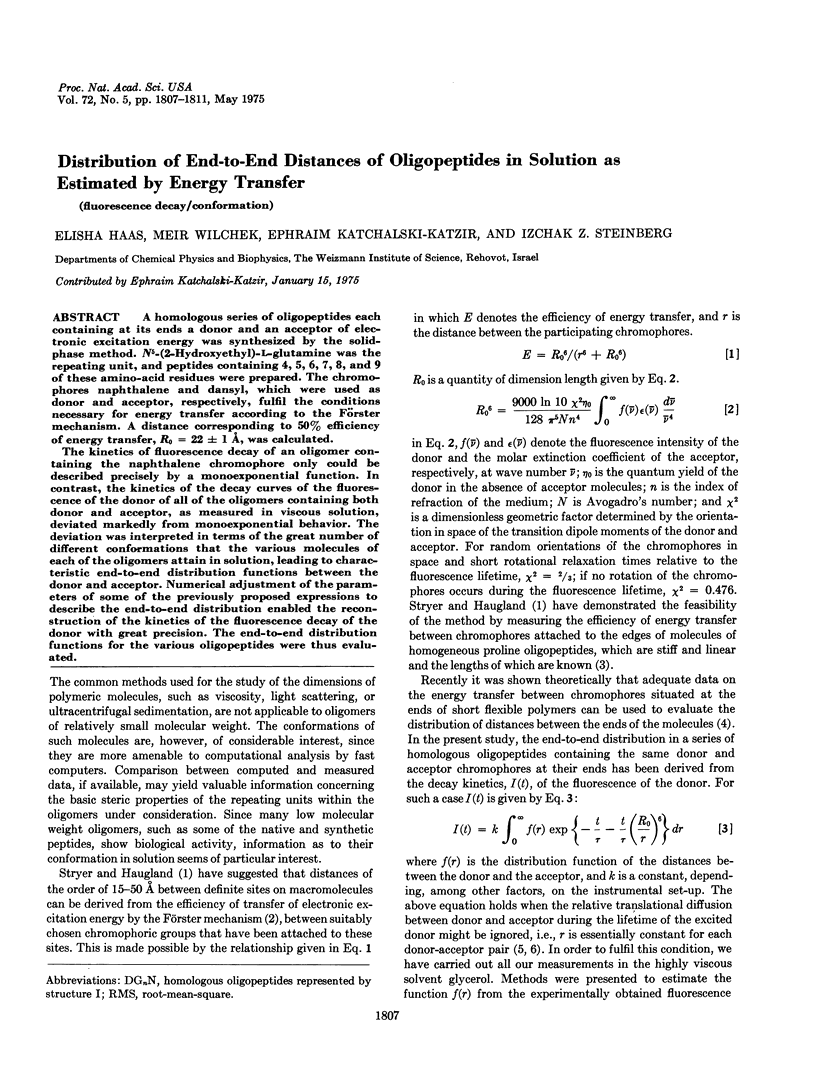
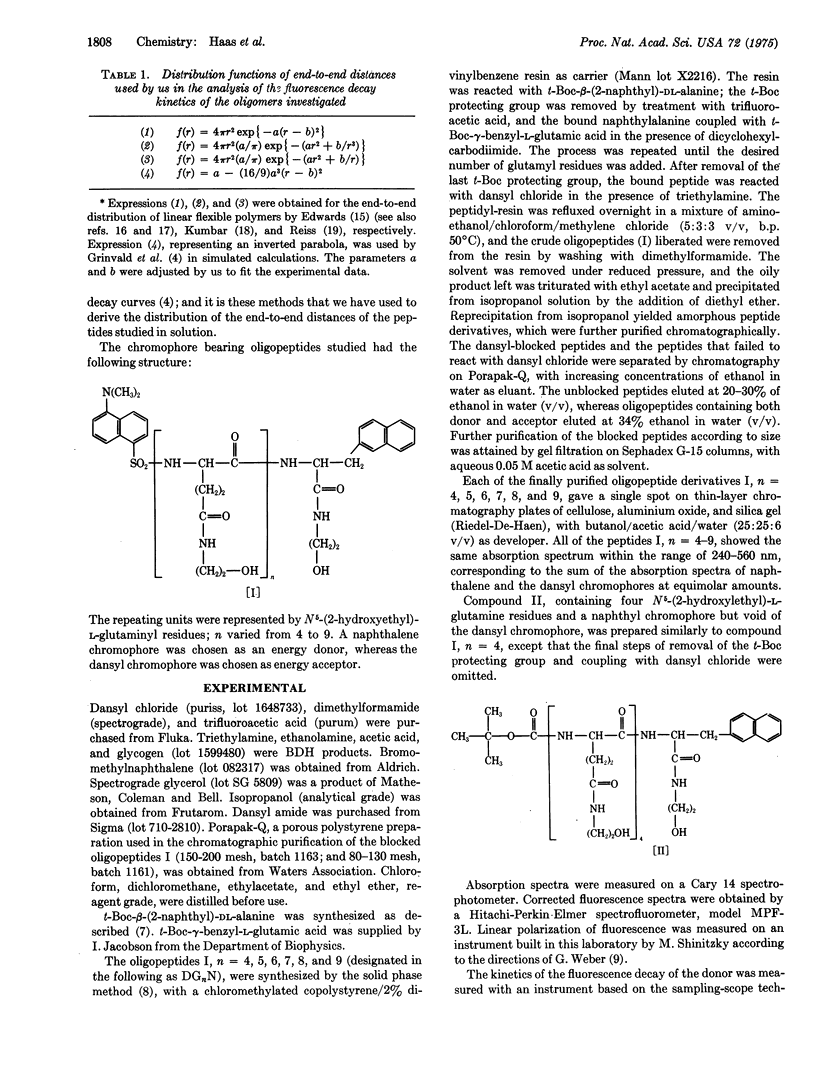
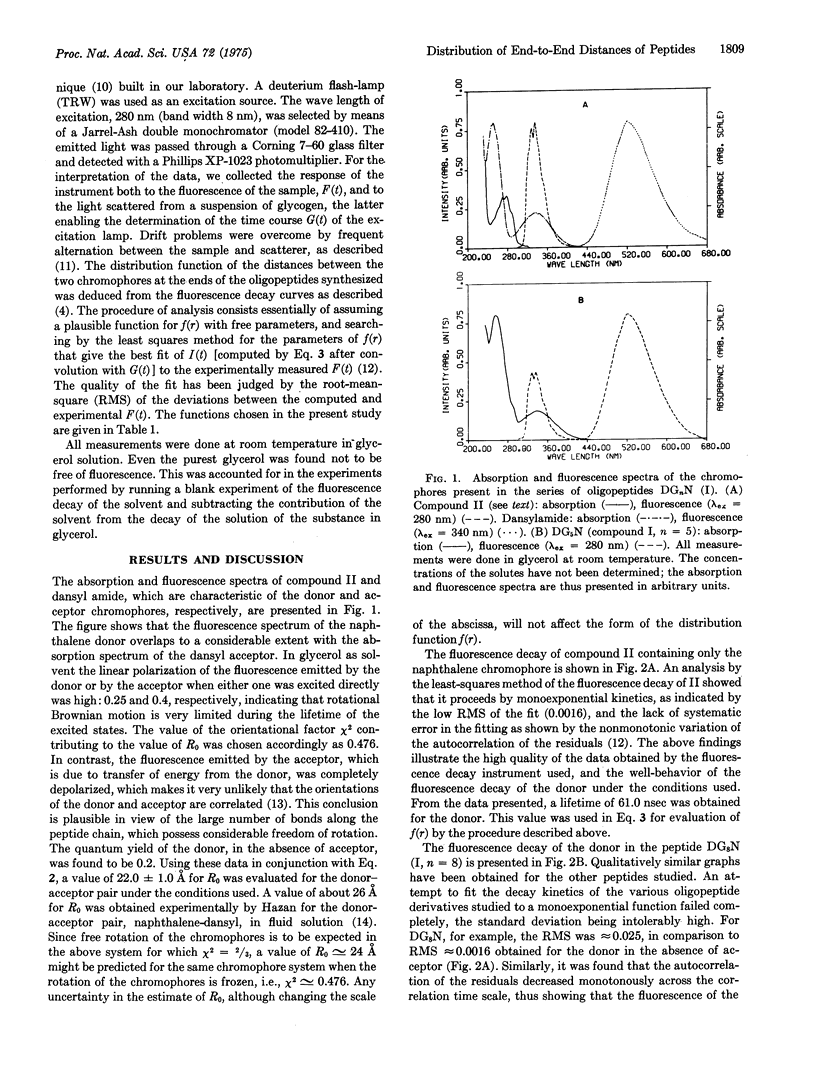
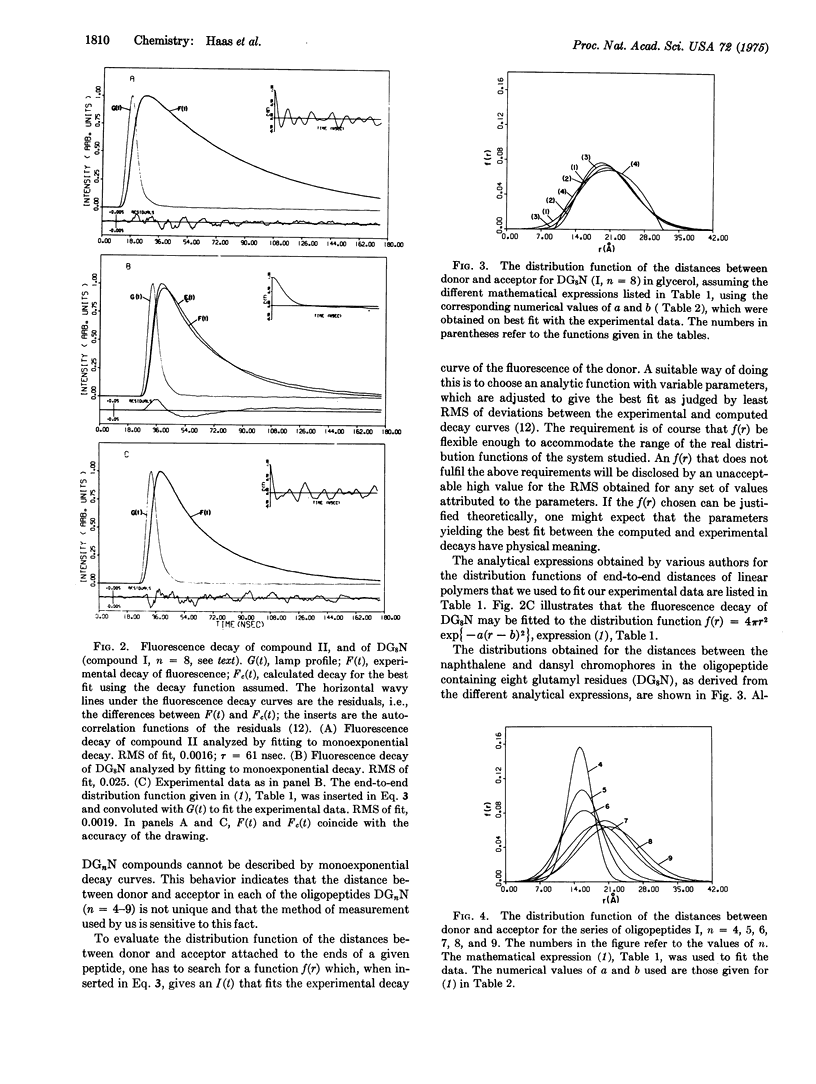
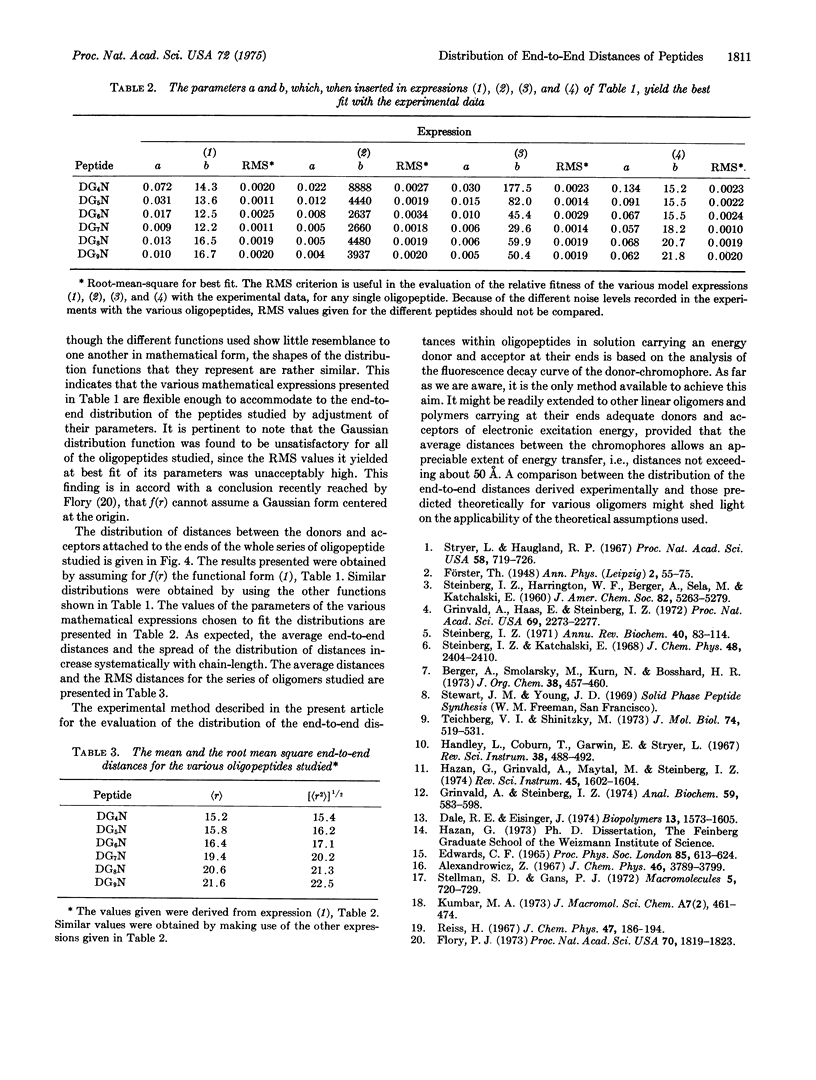
Selected References
These references are in PubMed. This may not be the complete list of references from this article.
- Berger A., Smolarsky M., Kurn N., Bosshard H. R. A new method for the synthesis of optically active -amino acids and their N derivatives via acylamino malonates. J Org Chem. 1973 Feb 9;38(3):457–460. doi: 10.1021/jo00943a009. [DOI] [PubMed] [Google Scholar]
- Flory P. J. Moments of the End-to-End Vector of a Chain Molecule, Its Persistence and Distribution. Proc Natl Acad Sci U S A. 1973 Jun;70(6):1819–1823. doi: 10.1073/pnas.70.6.1819. [DOI] [PMC free article] [PubMed] [Google Scholar]
- Grinvald A., Haas E., Steinberg I. Z. Evaluation of the distribution of distances between energy donors and acceptors by fluorescence decay. Proc Natl Acad Sci U S A. 1972 Aug;69(8):2273–2277. doi: 10.1073/pnas.69.8.2273. [DOI] [PMC free article] [PubMed] [Google Scholar]
- Grinvald A., Steinberg I. Z. On the analysis of fluorescence decay kinetics by the method of least-squares. Anal Biochem. 1974 Jun;59(2):583–598. doi: 10.1016/0003-2697(74)90312-1. [DOI] [PubMed] [Google Scholar]
- Hundley L., Coburn T., Garwin E., Stryer L. Nanosecond fluorimeter. Rev Sci Instrum. 1967 Apr;38(4):488–492. doi: 10.1063/1.1720743. [DOI] [PubMed] [Google Scholar]
- Steinberg I. Z. Long-range nonradiative transfer of electronic excitation energy in proteins and polypeptides. Annu Rev Biochem. 1971;40:83–114. doi: 10.1146/annurev.bi.40.070171.000503. [DOI] [PubMed] [Google Scholar]
- Stryer L., Haugland R. P. Energy transfer: a spectroscopic ruler. Proc Natl Acad Sci U S A. 1967 Aug;58(2):719–726. doi: 10.1073/pnas.58.2.719. [DOI] [PMC free article] [PubMed] [Google Scholar]
- Teichberg V. I., Shinitzky M. Fluorescence polarization studies of lysozyme and lysozyme-saccharide complexes. J Mol Biol. 1973 Mar 15;74(4):519–531. doi: 10.1016/0022-2836(73)90044-2. [DOI] [PubMed] [Google Scholar]


